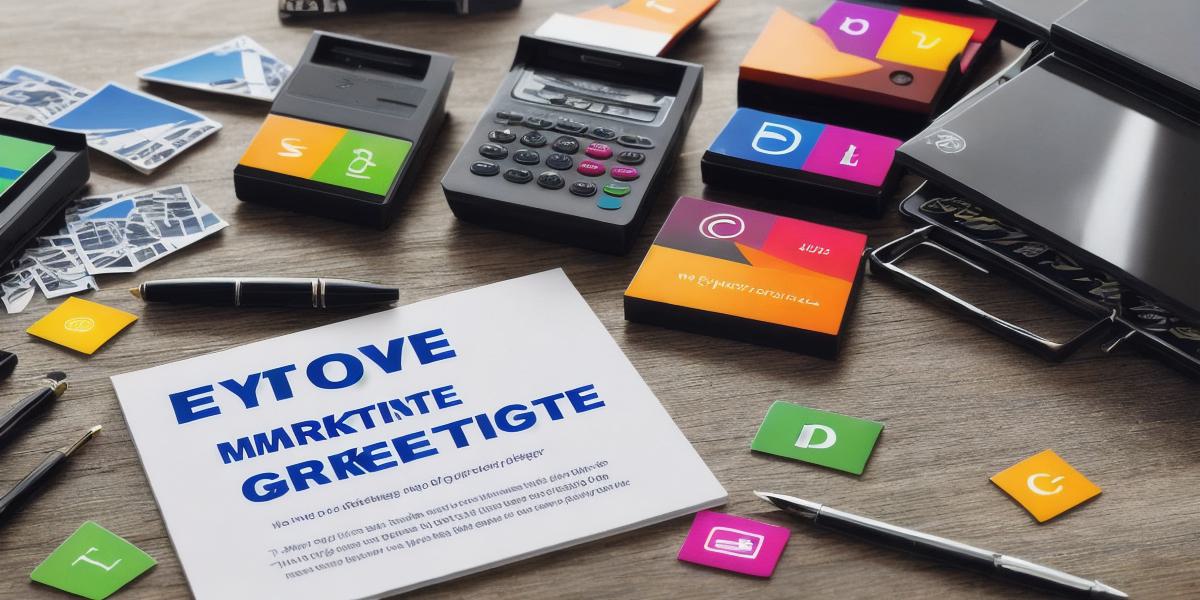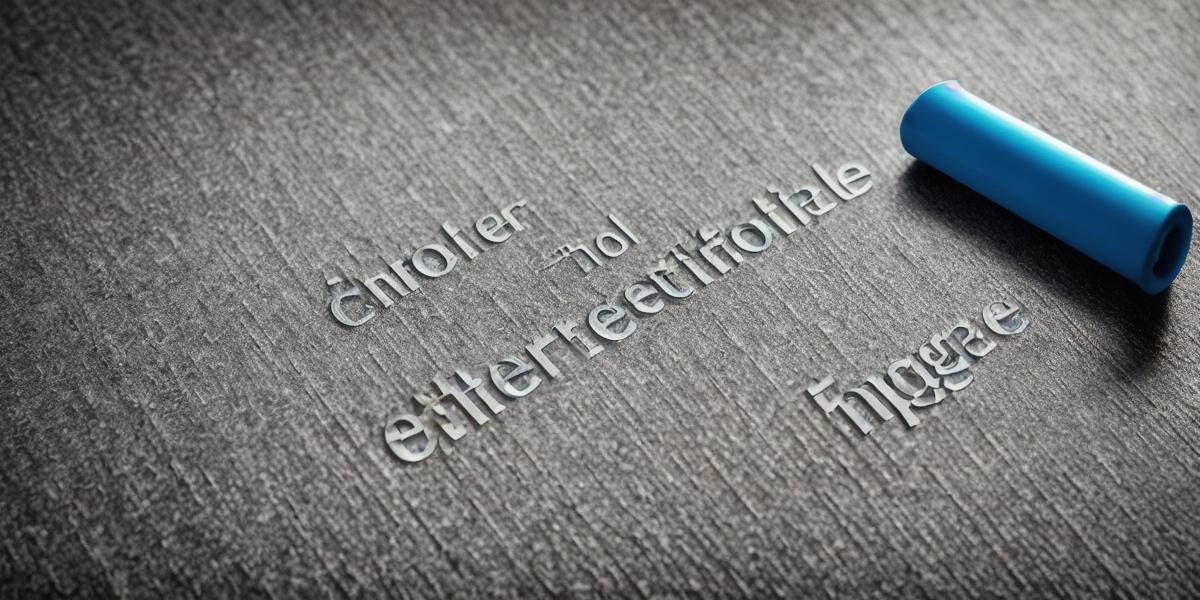Marketing graphics are a powerful tool for businesses looking to engage with their target audience and communicate their brand message effectively. These visual elements can help capture attention, convey information quickly, and leave a lasting impression on potential customers. However, creating eye-catching marketing graphics that resonate with your audience requires careful planning, research, and execution. In this guide, we will explore some best practices for designing and optimizing your marketing graphics to maximize their impact and achieve your business goals.
I.
Introduction
A. The Importance of Marketing Graphics
B. The Purpose of the Guide

II.
Understanding Your Audience
A. Defining Your Target Market
B. Identifying Your Audience’s Pain Points and Needs
C. Conducting Market Research to Inform Design Decisions
III.
Creating Effective Graphic Design Elements
A. Choosing the Right Visual Style
B. Using Color Effectively
C. Incorporating Typography into Your Design
D. Balancing Text and Images
E. Adding Interactive Elements to Enhance Engagement
IV. Optimizing Your Graphics for Search Engines
A. Choosing the Right File Formats
B. Using Keyword Research to Improve SEO
C. Adding Alt Text and Captions to Enhance Accessibility
D. Optimizing Image Sizes and Compression
V. Measuring and Analyzing Your Graphics’ Impact
A. Tracking Metrics such as Engagement Rates, Conversion Rates, and Click-Through Rates
B. Conducting A/B Testing to Optimize Designs
C. Analyzing Data to Identify Trends and Patterns
VI.
Summary
A. Recap of Key Takeaways
B. Encouraging Action for Businesses to Apply These Principles
C. Final Thoughts on the Importance of Effective Marketing Graphics
Introduction
A. The Importance of Marketing Graphics

Marketing graphics are an essential component of any business’s marketing strategy. They can help capture attention, convey information quickly, and leave a lasting impression on potential customers. By using creative and visually appealing graphics, businesses can effectively communicate their brand message and connect with their target audience on a deeper level. However, creating eye-catching marketing graphics requires careful planning, research, and execution. In this guide, we will explore some best practices for designing and optimizing your marketing graphics to maximize their impact and achieve your business goals.
B. The Purpose of the Guide
The purpose of this guide is to provide businesses with the knowledge and tools they need to create effective and eye-catching marketing graphics that resonate with their target audience. By following these best practices, businesses can improve their visual communication skills, increase engagement rates, and ultimately drive more conversions and revenue. Whether you’re a small business or a large corporation, this guide will provide valuable insights and actionable advice to help you create impactful marketing graphics that align with your brand values and messaging.
Understanding Your Audience
A. Defining Your Target Market
To create effective marketing graphics, it’s essential to have a clear understanding of your target market. Start by defining who your ideal customer is and what their pain points, needs, and interests are. This information will help guide your design decisions and ensure that your graphics resonate with the people you want to reach. For example, if your business sells eco-friendly products, your target audience may be environmentally conscious consumers who prioritize sustainability in their purchasing decisions.
B. Identifying Your Audience’s Pain Points and Needs
Once you have a clear understanding of your target market, identify the pain points and needs they have that your business can address. This information will help you craft compelling visual messages that speak directly to their concerns and desires. For example, if your target audience is struggling with time management, your marketing graphics could focus on how your product or service can help them save time and increase productivity.
C. Conducting Market Research to Inform Design Decisions
To further inform your design decisions, conduct market research to gain insights into what works well in your industry and what doesn’t. This research can include analyzing competitors’ marketing graphics, conducting surveys or focus groups with your target audience, and reviewing industry trends and best practices. By incorporating these insights into your design process, you can create graphics that stand out from the competition and effectively communicate your unique value proposition.
Creating Effective Graphic Design Elements
A. Choosing the Right Visual Style
To create effective marketing graphics, it’s important to choose a visual style that resonates with your target audience. This could include using bright colors, bold typography, or abstract patterns to convey a sense of energy and creativity. Alternatively, you may want to opt for a more minimalist approach that emphasizes clean lines and simplicity to create a sense of sophistication and professionalism. Ultimately, the key is to choose a visual style that aligns with your brand values and messaging and effectively communicates your unique personality to your target audience.
B. Using Color Effectively
Color can be a powerful tool in marketing graphics, as it can evoke emotions, convey meaning, and draw attention to specific elements of your design. When choosing colors for your graphics, consider the cultural and psychological associations of each color and how they align with your brand values and messaging. For example, blue is often associated with trust and reliability, while green can convey a sense of sustainability and eco-friendliness. By using color effectively, you can create graphics that are visually appealing and emotionally engaging for your target audience.
C. Incorporating Typography into Your Design
Typography is another essential element of marketing graphics that can help convey information quickly and effectively. When choosing typography for your design, consider the readability, legibility, and personality of each font. Sans-serif fonts are often used in marketing graphics because they are clean and modern, while serif fonts can convey a sense of tradition and luxury. By incorporating typography into your design effectively, you can create graphics that are easy to read and understand, while also communicating your brand’s unique personality and voice.
D. Balancing Text and Images
To create effective marketing graphics, it’s important to balance text and images in a way that is visually appealing and easy to understand. This means using images to reinforce key messages, rather than relying on them solely to convey information. It also means using captions and labels to provide context and clarify what the image is trying to communicate. By balancing text and images effectively, you can create graphics that are both visually engaging and informative for your target audience.
E. Adding Interactive Elements to Enhance Engagement
Interactive elements such as animations, videos, and interactive infographics can be a great way to enhance engagement with your marketing graphics. These elements can help capture attention, convey information quickly, and provide a more immersive experience for your target audience. However, it’s important to use these elements sparingly and in a way that enhances the overall impact of your design. By adding interactive elements thoughtfully, you can create graphics that are both visually appealing and engaging for your target audience.
Optimizing Your Graphics for Mobile Devices
As more people access the internet through mobile devices, it’s essential to optimize your marketing graphics for these platforms. This means using responsive design techniques to ensure that your graphics look great on all screen sizes, and using larger font sizes and simpler designs to improve readability and legibility. It also means testing your graphics on different devices and browsers to identify any potential issues and make necessary adjustments. By optimizing your graphics for mobile devices, you can ensure that they are accessible and engaging to your target audience, regardless of where or how they view them.
Measuring the Impact of Your Graphics
To determine the impact of your marketing graphics, it’s important to track key metrics such as click-through rates, conversion rates, and engagement rates. This information can help you identify which graphics are most effective and make data-driven decisions about future design efforts. By measuring the impact of your graphics regularly, you can continuously improve your visual communication skills and drive more conversions and revenue for your business.
Summary
Creating effective and eye-catching marketing graphics is an essential part of any successful digital marketing strategy. By following these best practices, businesses can improve their visual communication skills, increase engagement rates, and ultimately drive more conversions and revenue. Whether you’re a small business or a large corporation, by investing in high-quality design and optimizing your graphics for mobile devices, you can create impactful marketing graphics that align with your brand values and messaging and resonate with your target audience.




